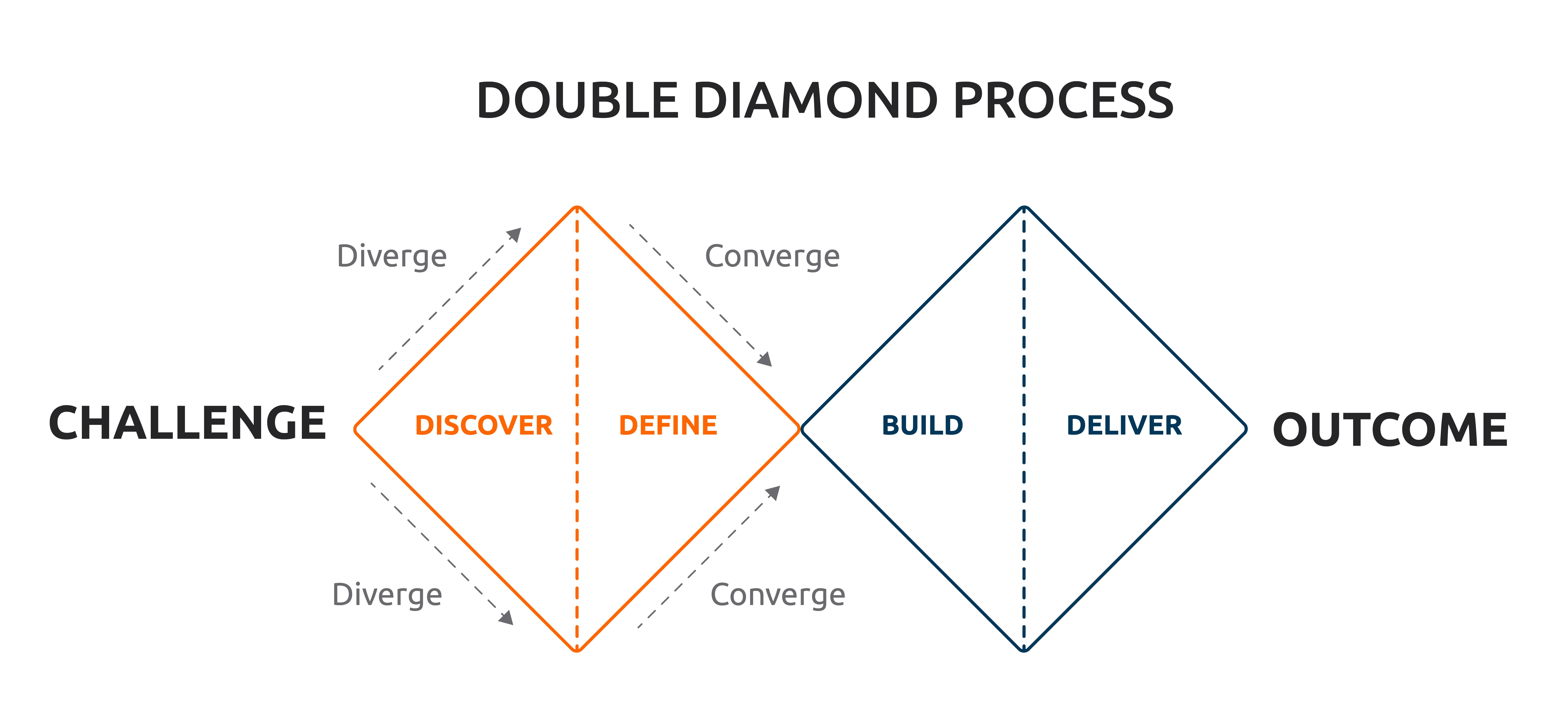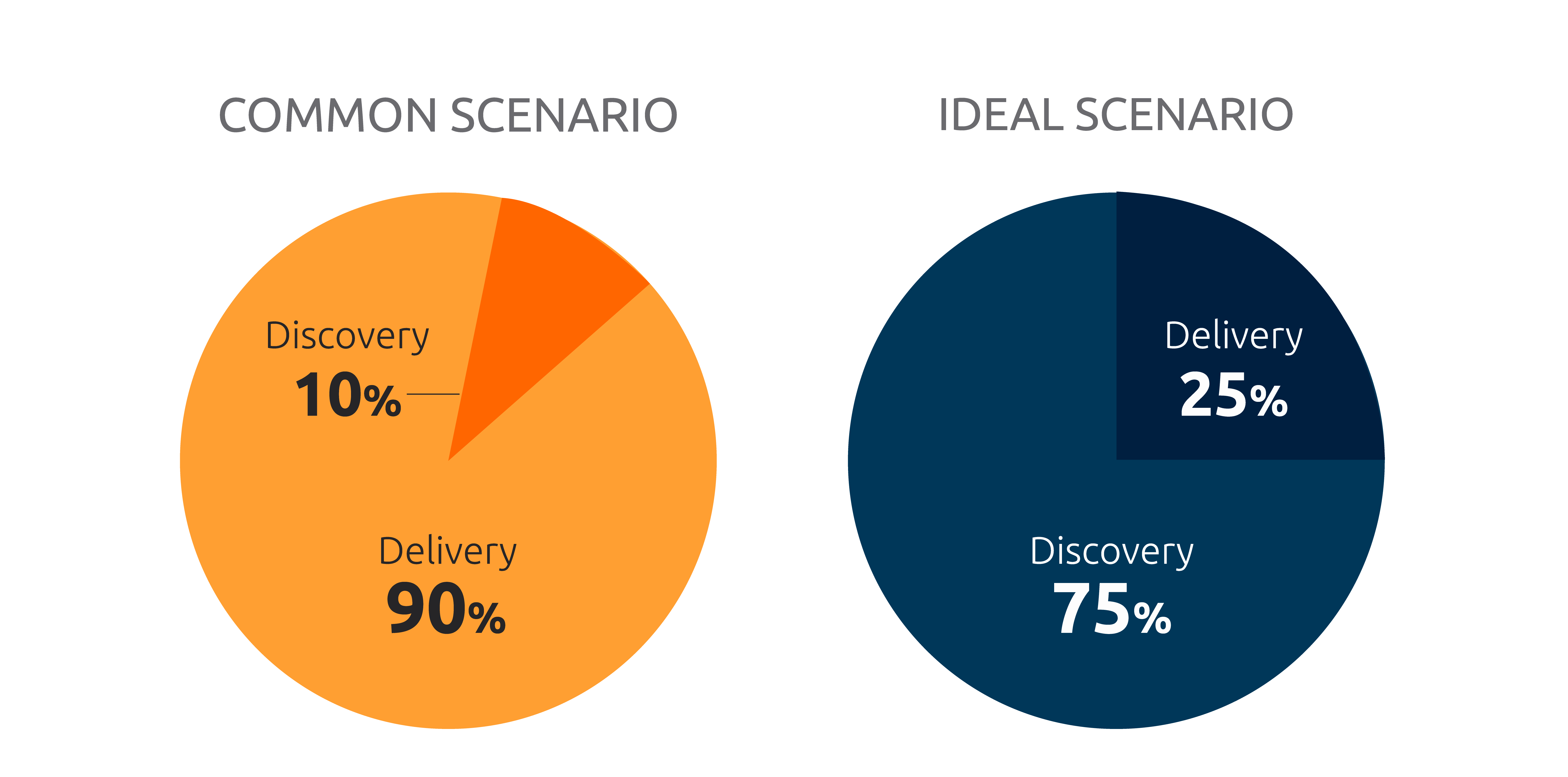Product Discovery: Building Efficient Products
The success of any product development project in complex and uncertain environments heavily relies on Product Discovery.
This process allows us to gain a deep understanding of user needs and market opportunities before we begin product construction.
Thus, companies can develop solutions that truly address user problems and generate value for the business.
What is Product Discovery?
Product Discovery is a crucial process in product development, focused on deeply understanding user needs and market opportunities prior to any solution construction.
It means “discovering a product” and is a phase of Product Development, consisting of Product Discovery and Product Delivery.
It involves a set of activities aimed at understanding the product itself, its customers, the business rules governing it, current metrics, and the key problems to be solved.
Phases of Product Discovery
Discover: In this phase, the team strives to understand as much as possible about the problem and its context. This involves analyzing existing data, market data, and user interactions to identify opportunities and challenges.
Define: Based on the information gathered during the Discovery phase, the team decides which problems will be prioritized for resolution. Clarity about strategic objectives and business goals is crucial at this stage.
Validate: Once the problems are defined, it’s time to validate the proposed solutions. This can be done through prototyping, usability testing, and user feedback to ensure that the solutions meet the identified needs.
Iterate: The Product Discovery process is iterative and continuous. After validating the solutions, the team can iterate and adjust as necessary based on the feedback received, ensuring that the final product is truly valuable to users.
The Double Diamond Diagram and Product Discovery
The double diamond diagram, widely used in the UX Design process, perfectly illustrates the Product Discovery process.

Starting broadly, with a focus on deeply understanding a problem and its context, this process leads to defining the priority problems to be solved.
Although it does not cover ideation, prototyping, and testing stages, its execution is crucial for the success of these subsequent stages.
Product Discovery vs. Product Delivery
Both are key elements in the cycle of successful product development.
However, while Product Discovery involves deep immersion in research and understanding user needs, Product Delivery is the phase where these findings are transformed into tangible and functional solutions.
Though distinct, these processes are complementary, requiring an integrated approach to ensure effective results.
Product Discovery lays the groundwork for Product Delivery, ensuring that the developed product meets the real needs of the market and users.
On the other hand, Product Delivery brings to life the visions and concepts discovered during the discovery process, turning ideas into tangible and viable products.
Check out the diagram below for the ideal scenario to integrate these stages to ensure product success:

Benefits of Product Discovery for Companies
By not dedicating resources to the Discovery phase and “jumping” directly to Delivery, companies face various problems in the near future.
This includes user disengagement, low adoption of features, high churn rates, low NPS scores, nonexistent or illusory innovation, low or null return on investment, difficulties in generating growth at scale, loss of market share, and unnecessarily high costs.
At Briteris, our commitment is to provide solutions that add real value to our clients’ businesses.
In addition to identifying opportunities, we also collaborate with our clients to generate highly efficient and effective solutions.
Through a collaborative process, we align our strategies with market needs, ensuring that the developed solutions not only meet technical requirements but also the expectations of end-users and the business.
Speak to one of our experts to implement this strategy in your business.

